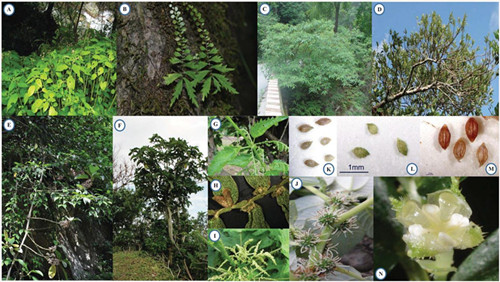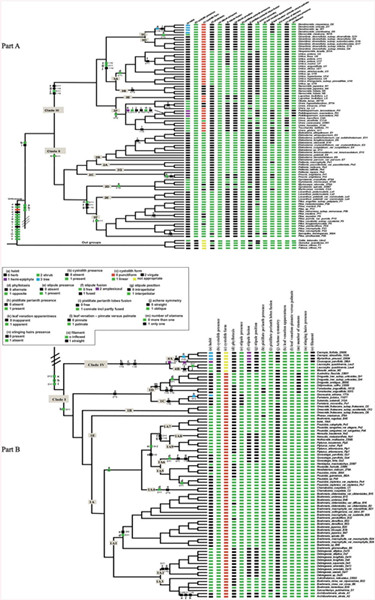Urticaceae Juss. is a large cosmopolitan family, and it is a taxonomically difficult group, partly because it encompass a broad range of morphological diversity, and many of the diagnostic characters (e.g. flower, achene, stipule and bract et al.) require a microscope for accurate determination; and most Urticeae species with stinging hairs make it become more difficult to collect and identify. Therefore, the infra-familial classification of Urticaceae has been controversial for more than one century.
The research group led by Prof. LI Dezhu from Kunming Institute of Botany, Chinese Adcemey of Sicences has deeply focused on the systematics and biogeography of Urticaceae for many years. Based on the observations of plants in the field, and herbarium material in major British and Chinese herbaria (BM, E, K, KUN and PE), using the latest phylogenetic hypothesis and Ancestral State Reconstruction (ASR), via parsimony and likelihood approaches, the researchers chose 19 diagnostic morphological characters in Urticaceae to study their character evolution.
The results revealed that 16 characters exhibited multiple state changes within the family, and morphological synapomorphies were identified for many clades. Recognition of the four major clades of the family as subfamily lineages can be supported by a small number carefully chosen defining traits for each. Some character evolution may be attributed to adaptive evolution in Urticaceae due to shifts in habitat or vegetation type. This study demonstrated the value of using phylogeny to trace character evolution, and determine the relative importance of morphological traits for classification.
The research has been recently published online in PLOS ONE: http://journals.plos.org/plosone/article?id=10.1371/journal.pone.0141821. This project was supported by number of foundations incuded: the Key Program of National Natural Science Foundations of China (40830209), the National Basic Research Program of China (2014CB954100), the Basic Research Project of the Ministry of Science and Technology, China, (2013FY112600), the National Natural Science Foundations of China (41571059), and the Applied and Fundamental Research Foundation of Yunnan Province (2014GA003). The first author, Dr. WU Zengyuan was supported by the China Scholarship Council for one-year study at the Natural History Museum, and the Royal Botanic Gardens Kew, in the United Kingdom.

Figure 1. Representatives of morphological diversity in Urticaceae (Image by KIB)

Figure 2. Ancestral state reconstruction of 15 selected morphological characters in Urticaceae based on the maximum parsimony analysis (Image by KIB)
Reference:
Wu Z-Y, Milne RI, Chen C-J, Liu J, Wang H, Li D-Z (2015) Ancestral State Reconstruction Reveals Rampant Homoplasy of Diagnostic Morphological Characters in Urticaceae, Conflicting with Current Classification Schemes. PLOS ONE 10(11): e0141821. doi:10.1371/journal.pone.0141821
Contact:
WU Zengyuan
Key Laboratory for Plant Diversity and Biogeography of East Asia, CAS
Kunming Institute of Botany
Email: wuzengyuan@mail.kib.ac.cn




